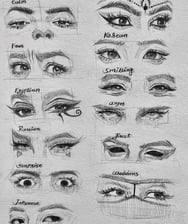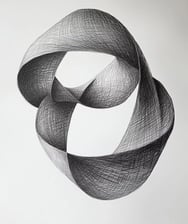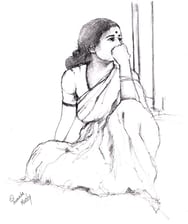
NID Coaching
Master the NID Entrance Exam with idesigntutorials!
What is NID?


Pioneering Design Education
NID holds the distinction of being India's foundational institution for design, setting benchmarks and shaping the national design landscape since its inception.
Industry Integration
Strong ties with industry ensure a curriculum that is relevant and practical, providing students with valuable real-world exposure and opportunities.
Diverse Design Disciplines
NID offers a wide spectrum of specialized programs, ensuring comprehensive education across numerous design domains.
Interdisciplinary Approach
The institute fosters a holistic learning environment, encouraging cross-disciplinary thinking and collaboration across various design fields.
Experienced Faculty
Students benefit from guidance by experienced faculty from both academia and industry, ensuring a blend of theoretical knowledge and practical insights.
The National Institute of Design (NID) is a premier autonomous institution in India, recognized globally for its excellence in design education, research, and service. Established in 1961, NID has been instrumental in shaping the design landscape of the country, fostering creative thinkers and problem-solvers across various design disciplines.
State-of-the-Art Facilities
NID campuses are equipped with advanced studios, workshops, labs, and resources that facilitate experimentation and innovation.
Strong Alumni Network & Placements
NID graduates are highly sought after by top design firms, corporate houses, and start-ups across various sectors, both nationally and internationally. Many also become successful entrepreneurs.
Cultural and Social Sensitivity
NID instills in its students a strong sense of social responsibility and cultural awareness, encouraging them to design for impact and inclusivity..
NID actively engages in design research, contributing to the advancement of design knowledge and addressing contemporary challenges through innovative solutions.
Focus on Research & Innovation
Why NID?

NID Admission Process: A Comprehensive Overview
Admission to NID's highly coveted programs is a rigorous, two-stage process: the Design Aptitude Test (DAT) Prelims and DAT Mains.
NID DAT Prelims (Design Aptitude Test - Preliminary)
This is the first stage, a written examination that assesses a candidate's general aptitude, observation skills, logical reasoning, and creative abilities. It is a pen-and-paper test that includes both objective and subjective questions.
NID DAT Mains (Studio Test & Interview)
Candidates who clear the DAT Prelims are invited for the DAT Mains, which is a practical, hands-on evaluation followed by a personal interview (for B.Des) or sometimes includes a portfolio review and interview (for M.Des).
Creative Ability Test (CAT)


This section evaluates your visual communication, imagination, and sketching skills.
Creativity & Imagination
Developing innovative ideas, conceptualization, problem-solving through visual representation, doodling, story pictures.






Drawing & Sketching
Freehand drawing, perspective drawing, human figures, object sketching, proportion, composition, light and shade, texture.
Color Theory
Design Fundamentals
Memory Drawing
Visual Logic
3D Visualization
Understanding color terminology, psychology, mood, theme, and effective use of colors in compositions.
Elements (line, shape, form, space, color, texture) and principles of design (balance, emphasis, movement, pattern, repetition, proportion, variety).
Analyzing visual patterns, understanding optical illusions, good vs. bad design.
Reproducing objects or scenes from memory
Ability to imagine and represent three-dimensional forms on a two-dimensional surface.
General Ability Test (GAT)

This section assesses your analytical, logical, and general knowledge. While the weightage for GAT might be less compared to CAT, it's still crucial.
Verbal Ability
English comprehension, grammar (synonyms, antonyms, idioms, sentence correction, singular/plural).




Quantitative Ability
Basic arithmetic (percentages, ratio & proportion, profit & loss, interest, averages), data interpretation. (Note: sometimes less focus on this for NID, but can appear).
Logical Reasoning & Analytical Thinking
General Knowledge & Current Affairs
Design Awareness
Puzzles, series, pattern recognition, coding-decoding, blood relations, seating arrangements, syllogisms, figure analysis (mirror images, paper folding/cutting, embedded images).
Awareness of design history and movements, famous designers, art, culture, technology, current events (national and international), brands and logos.
Understanding the impact of design on society, different design disciplines (e.g., graphic, industrial, product, textile design).
Weightage
NID DAT Prelims acts as a screening test. The weightage varies slightly for B.Des and M.Des, but CAT typically holds a higher weightage (e.g., 70-80%) than GAT (e.g., 20-30%).
NID DAT Mains: Studio Test
Candidates who clear the DAT Prelims are invited for the DAT Mains, which is a practical, hands-on evaluation followed by a personal interview (for B.Des) or sometimes includes a portfolio review and interview (for M.Des).
Weightage: The Studio Test is a significant component of the DAT Mains, often carrying a substantial weightage (e.g., 60-70% for B.Des Mains, and a significant portion for M.Des Mains)
Construction of functional and aesthetic 3D models. Evaluation considers stability, neatness, creative use of materials, and concept.
Model Making
Sketching Test
Material Manipulation
Skillfull and imaginative use of provided materials (e.g., paper, clay, wire, thread, foam, fabric, natural objects like leaves/twigs, etc.) to create 2D or 3D models.
Ability to interpret visual prompts, observe details from objects/scenes, and visualize forms in 3D.
Observation & Visualization
Expressing ideas, concepts, and observations through drawing, focusing on perspective, proportion, and line quality.
Creative Thinking & Problem Solving
Your ability to respond innovatively to given design challenges, often with limited resources.












Doodling/Storyboarding
Creating visual narratives, expressing emotions, or completing a story through illustrations.


Audio-Visual Test
Interpreting and responding to audio clips or visual sequences through sketches, descriptions, or short write-ups. This tests sensory perception and interpretation.


Thematic Apperception
Responding to specific themes or scenarios with design solutions.
NID DAT Mains: Personal Interview (PI) & Portfolio Review
Candidates who clear the DAT Prelims are invited for the DAT Mains, which is a practical, hands-on evaluation followed by a personal interview (for B.Des) or sometimes includes a portfolio review and interview (for M.Des).
Weightage: The Interview (and Portfolio Review if applicable) contributes to the final selection, often around 30-40% of the DAT Mains score.
Awareness of current affairs, social issues, and how design can address them.
General Awareness
Extracurricular Activities & Hobbies
Design Knowledge & Awareness
Your understanding of design principles, history, contemporary trends, and various design disciplines.
Your genuine interest in design, reasons for choosing NID, and future aspirations.
Motivation & Passion
Demonstrating a well-rounded personality and transferable skills.
Communication Skills
Clarity of thought, ability to articulate ideas effectively, and confidence.












Portfolio (for M.Des, or sometimes B.Des)
A collection of your best creative works (sketches, paintings, design projects, photographs, models, digital art). The portfolio demonstrates your design potential, skill range, and conceptual abilities. It's crucial to be able to explain each piece effectively.


Problem-Solving Approach
Your thought process when presented with hypothetical design challenges


Statement of Purpose (SoP) discussion (for M.Des)
Discussion based on the SoP submitted during application, demonstrating your research interests and career goals.

The coaching helped me excel in my entrance exams for prestigious design colleges. Highly recommend!
Aditi Sharma

I gained confidence and skills for NID and NIFT exams through their excellent coaching methods.
Rahul Verma





